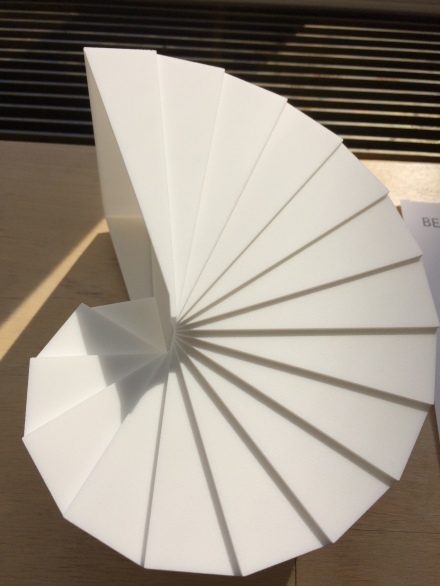There were so much interesting work at the Art Exhibition this year, is was difficult to choose just a few for my blog.
Bernhard Rietzl’s 3-D printing of “Nautilus Theodori” offers an elegant interpretation of a spiral developed by Theodorus of Cyrene in Greece in the 5th century BC.

The Spiral of Theodorus is constructed using right triangles. It begins with a central isosceles right triangle. The legs of this first triangle determine the length of each of the shorter legs for all triangles in the spiral. The second triangle uses the hypotenuse of the first triangle as its longer leg. The third triangle uses the hypotenuse of the second triangle as its longer leg. This process continues to create the spiral. Rietzl’s sculpture uses hollow 3-D wedges to create a shell-like vessel. The clean lines of the triangle give the nautilus shell an element of modern design.
Nathan Selikoff’s video “Audiograph” is produced in real time based on the interaction of environmental factors. The work is a projection of a clock. The hours and the minutes hands are fairly traditional lines using audio waves.

The seconds hand of the clock however, is a representation of the sound over the course of a minute. The sounds and voices in the gallery leave lines radiating out from the center of the clock. The changes in the volume and the tone of the environment create the visual variations.
Selloff’s clock makes the viewer think about both time and sound. Using computer technology and the mathematics of audiology it creates a work that allows participants to change the visual output of the video within the time limitations of the movement of the seconds hand of a clock.
Susan Happersett